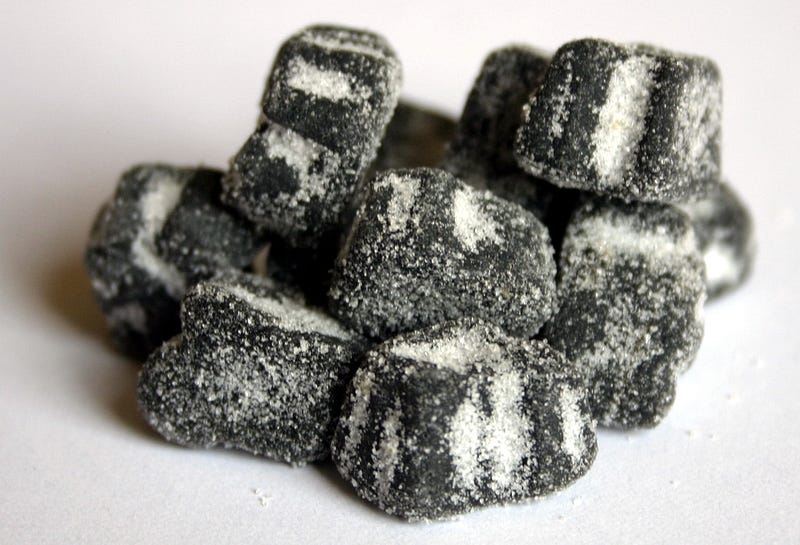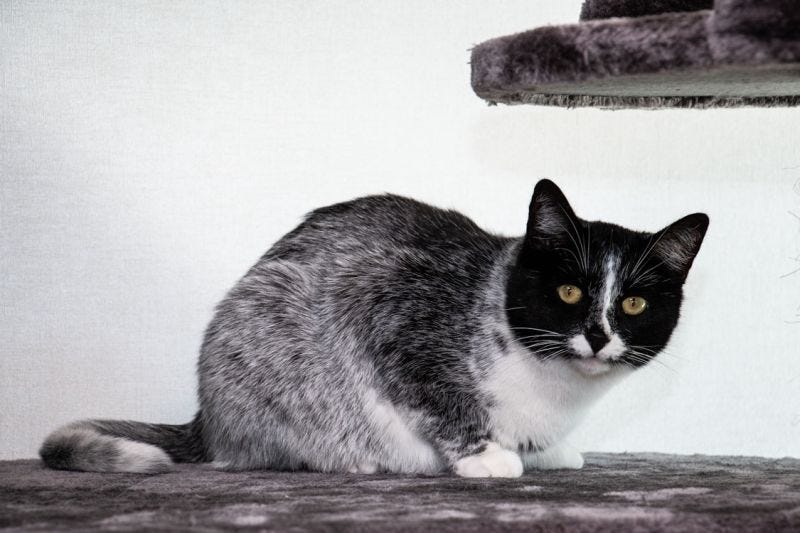Genetic Discovery of Finland’s Unique “Salty Licorice” Cat Coat
Written on
Chapter 1: Introduction to Salmiak Cats
A fascinating collaboration between scientists from the University of Helsinki and Wisdom Panel has unveiled the genetic mutation linked to a unique coat color pattern recently observed in domestic cats in Finland. Initially dubbed “the Finnish mutation” upon its discovery in 2007, this distinctive coat color appears exclusively in a specific feral cat population characterized by their black-and-white “tuxedo” appearance. Notably, this new color pattern features fur that is darker at the base and gradually lightens towards the tips, culminating in white tail ends.
This eye-catching coat has been named “salmiak,” after the popular Finnish salty licorice.
Section 1.1: Characteristics of Salmiak Cats
Salmiak cats generally exhibit the traditional “tuxedo” pattern, showcasing an all-white neck, chest, belly, and paws. However, there may be patches of color adorning some of these white areas. According to Heidi Anderson, a senior scientist at Wisdom Panel in Helsinki, who specializes in feline genetics, these cats have remained a rare sight in central Finland, all tracing back to a singular wild population.

Section 1.2: Investigating the Genetic Basis
Intrigued by the striking appearance of these cats, researchers at the University of Helsinki sought the expertise of Dr. Anderson and her team to uncover the genetic underpinnings of this unusual coat color. They began their research by genotyping a salmiak cat using the MyCatDNATM panel screening test. Their findings revealed that the unique white fur pattern lacked a known genetic basis.
To delve deeper, additional salmiak cats were genotyped, reaffirming that their atypical coloring stemmed from an unidentified genetic source. Given that white fur patterns in animals often result from variations in the KIT gene, it became a prime candidate for further investigation.
Chapter 2: The Role of the KIT Gene
The KIT gene plays a vital role in the development of various cell types, including pigment cells. In humans, numerous mutations of the KIT gene are linked to piebaldism, while certain genetically related coat color variations in horses are classified as “dominant white.” In domestic cats, two common variants of the KIT gene typically explain white coloring, including the breed-specific white paws seen in Birman cats.
However, initial sequencing of the KIT genes in two salmiak cats showed no variants. To explore the source of this unique coloring further, Dr. Anderson and her team conducted whole-genome sequencing on samples from two salmiak cats. Again, no KIT variants were found. Upon examining the region surrounding the KIT gene, they discovered a significant deletion of 95,000 base pairs downstream of the KIT gene, suggesting it could influence KIT gene expression.

Section 2.1: Confirming Genetic Findings
To validate their results, the team genotyped an additional 180 Finnish domestic cats, including three more salmiak cats. They found that the salmiak cats possessed two copies of the gene mutation, while three other cats had only one copy, lacking the salmiak coat. This confirmed that the salmiak coat pattern is inherited recessively, meaning it manifests only when a cat inherits two copies of the mutation—one from each parent.
While such deletions are rare, they have been identified in various animal species. For instance, a structural mutation downstream of the KIT gene is known to cause white coat color in cattle, goats, and horses.
“Understanding the salmiak variant enhances our comprehension of feline coat color genetics,” Dr. Anderson noted. “Moreover, this knowledge could be instrumental in breeding programs, aiding in the preservation of this unique trait in our feline companions.”

Source:
Heidi Anderson, Milla Salonen, Sari Toivola, Matthew Blades, Leslie A. Lyons, Oliver P. Forman, Marjo K. Hytönen, and Hannes Lohi (2024). A new Finnish flavor of feline coat coloration, “salmiak,” is associated with a 95?kb deletion downstream of the KIT gene, Animal Genetics | doi:10.1111/age.13438
Socials: Bluesky | CounterSocial | LinkedIn | Mastodon | MeWe | Spoutible | SubStack | Tribel | Tumblr | Twitter
Originally published at Forbes.com on 24 May 2024.